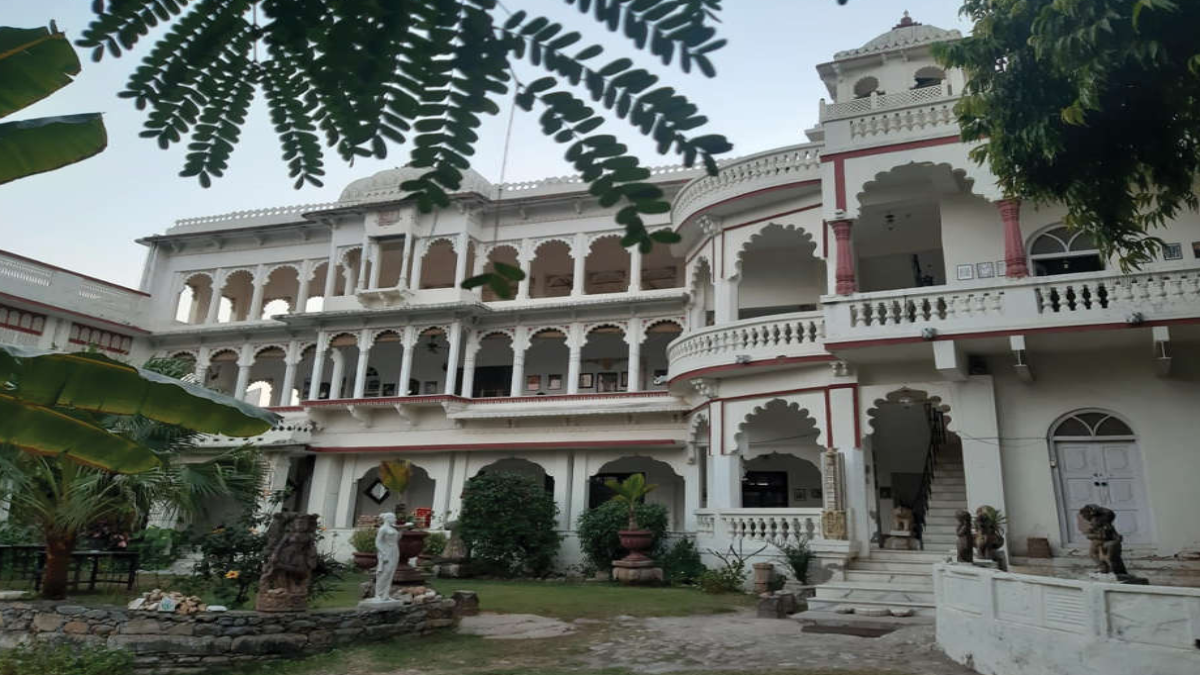Possibly one of the most elegant of the Gujarat royals, the family from the Poshina jaagirdaari exudes a sense of old world grace that reverberates through. The patriarch, Kunwar Harenderpal Sinh, with his lovely wife, Kanwarani Kailash Kumari, and his very good-looking son, first met me when we took Royal Fables to Gujarat and they drove all the way to Ahmedabad to encourage their kith and kin with their presence.

 On the shepherd trail
On the shepherd trail The property
The property The royals of Poshina
The royals of Poshina

Poshina, an independent jaagir which is part of the Vaghela dynasty in Patan, shares a border with Rajasthan. Eight generations of the family have ruled Poshina which is a vast jaagir of 84 villages. With strong Rajput roots and grandmothers coming from Rajasthan and Madhya Pradesh, Kunwar Harendrapal Sinh ji belongs to the tenth generation and lives on the property with his family, which runs its elegant residence Darbargarh in Poshina as a homestay, which is frequented by 99% of the global travellers that make their way into Gujarat every winter.
Darbargarh is surrounded by tribal villages inhabited by the Garasia tribals. This garh or fort has a unique façade, resplendent with arches that seem to touch the clouds and lattice work that is typical of Rajasthan, with a white and red limestone finish adding to its airs.
Divided into the jenana and mardana sections, the fort has a gracious garden flanking its façade. Vintage furniture, original doors and abundant trees fill this homestay. In the jenana courtyard resides a very old tree called the ‘Trinity’ because this marvel of nature is the result of the entwining of a neem tree, a peepal tree and a banyan tree, which have fused together over the years to form one consolidated trunk. Bards singing at the gate, a generous interlude with the tribals of the region, great food and a laid-back village life experience marks this quaint destination that is three hours away by road both from Udaipur and Ahmedabad.
Located in the Khedbrahma taluka of Sabarkantha district of Gujarat, the fort is pat in the midst of a non-touristy route. Yet it enjoys great acclaim amongst many global travellers who keep coming back in groups to stay at this quaint fort. They have quite a few American groups who return every other year and have even hosted an Indian wedding for an American couple.
A home to the family for many years, it was only recently converted, first into a culinary destination restaurant and then finally into a 25-keys heritage homestay where the family itself plays a gracious host. Food still remains at the heart of their offerings, with the family rustling up a mixture of local and royal cuisines. Kailash Kumari also holds personalized cooking classes for foreign guests who “love learning how to cook our smoked aubergine, chicken curry, cabbage dipped in sunflower oil and the local recipe for potatoes”.
Other recreational activities include going on a shepherd trail to meet the many goat and buffalo keepers abound in this region which flourished with the White Revolution, get a peep into the pastoral life of the colourfully dressed tribals, visit the wish tree where you can leave behind a wish in the form of a Poshina horse, or visiting the famed Ambaji temple. “The Poshina horse is made from mud, much like its cousin in Bankura. It is placed under two wish-giving trees that at any time have thousands of these horses parked under their shade,” she explains.







